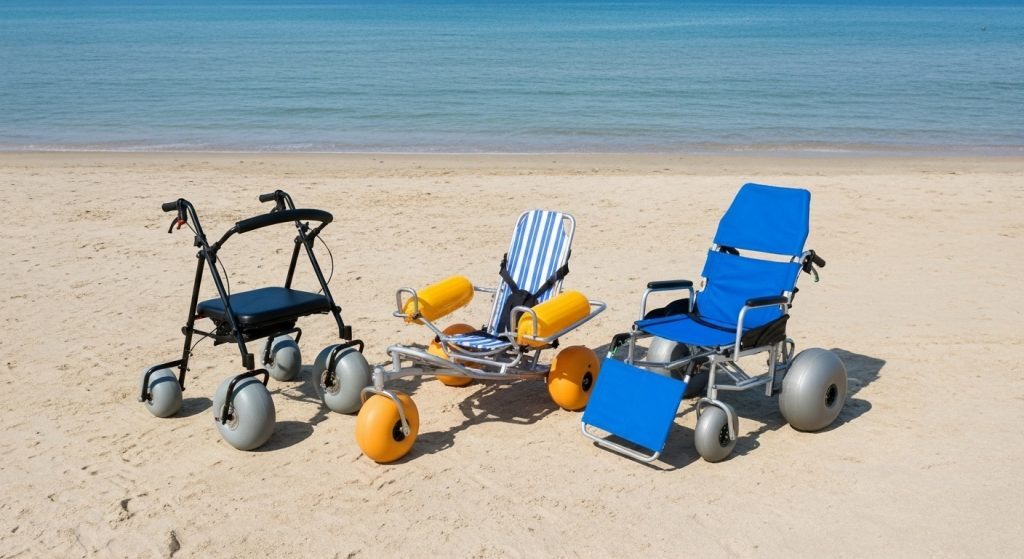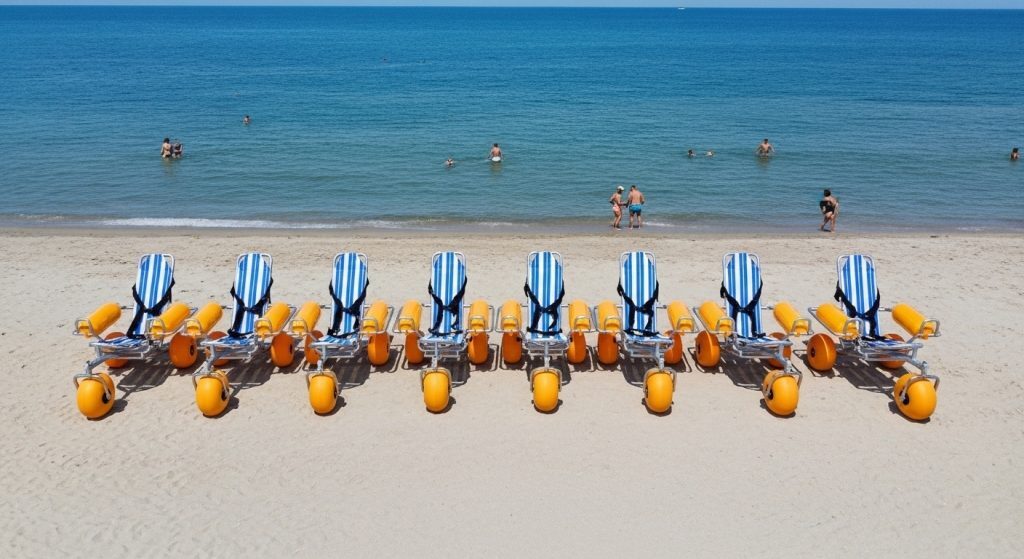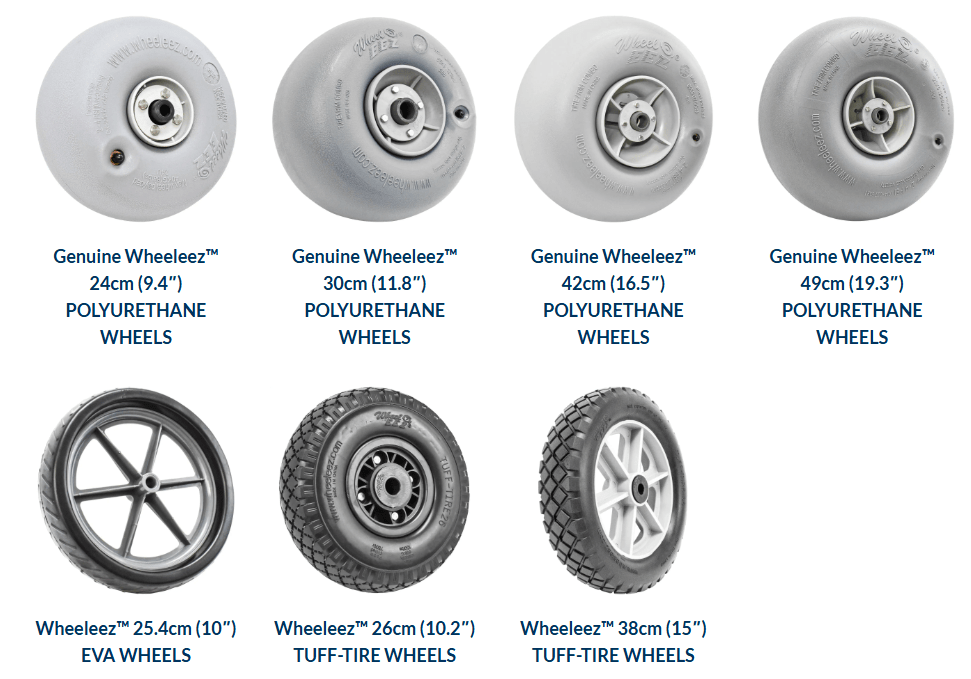The feeling of warm sun on your skin, the rhythmic sound of crashing waves, and the salty air—the beach is a place of joy and relaxation. But for many, the soft, shifting sand presents a significant barrier, turning a dream destination into an inaccessible landscape. What if you could glide over the sand instead of struggling through it? What if the water’s edge was a destination, not a distant dream? Today, innovative mobility solutions are transforming beach experiences for people with disabilities, seniors, and anyone needing a little extra support. This guide is your key to unlocking the coast. We’ll explore everything from simple, effective beach mats that create a stable path to specialized walkers and next-generation wheelchairs designed to conquer sand and even float in the water. It’s time to reclaim the coastline and make sure every beach day is filled with effortless enjoyment.
1. Why Beach Accessibility is More Than Just a Ramp

For decades, the conversation around public accessibility has centered on basics like ramps, accessible parking, and modified restrooms. While these are fundamentally important, true beach accessibility demands a more holistic vision. A ramp might get you from the parking lot to the boardwalk, but it often stops short of the main event: the sand and the sea. This creates an invisible barrier where the pavement ends, leaving individuals watching from a distance rather than participating.
True access is about the entire experience. It’s the ability to travel with family and friends across the sand, to sit near the water’s edge, to feel the cool spray of the waves, and to participate in the shared joy that a beach day offers. When this is not possible, the exclusion is more than just physical; it’s social and emotional. It reinforces a sense of limitation and separation.
Improving handicap beach access is about dignity, inclusion, and the universal right to enjoy our natural world. It’s about ensuring that the therapeutic and recreational benefits of the coast are available to everyone, regardless of their mobility level. The solutions we’ll explore in this guide are not just tools; they are keys to unlocking experiences, fostering independence, and creating memories that last a lifetime.
2. Overcoming the Challenge: The Problem with Mobility on Sand
To understand why specialized equipment is necessary, we must first appreciate the unique challenge sand presents. The problem lies in physics: soft, shifting sand offers poor support and high resistance.
Standard mobility aids—like wheelchairs with narrow tires or walkers with small, hard casters—are designed for firm, flat surfaces. On sand, they fail for a simple reason: pressure. Their small contact points concentrate the user’s weight into a tiny area, causing the wheels to dig in and sink rather than roll forward. Pushing a standard wheelchair or walker through sand is an exhausting, often impossible, task that can be both frustrating and unsafe.
This struggle with mobility on sand is particularly acute for older adults and individuals with limited strength. The immense physical effort required can lead to fatigue, falls, and a sense of defeat. This is a critical issue for senior beach mobility, as it can discourage participation in family outings and prevent seniors from enjoying the health benefits of being outdoors. The solution isn’t to exert more effort; it’s to use smarter equipment designed to work with the environment, not against it.
3. Creating Your Portable Beach Pathway: The Magic of Beach Access Mats
One of the most effective and straightforward solutions for creating a stable surface on sand is a beach access mat. This simple yet brilliant innovation acts as a portable beach pathway, instantly transforming a section of soft sand into a firm, traversable surface for wheelchairs, walkers, strollers, and pedestrians.
What is a Beach Access Mat and How Does It Work?
A beach access mat is a durable, flexible mat that is rolled out over the sand. Made from materials like high-density plastic or polyester, these mats distribute weight over a large surface area, preventing wheels from sinking. The surface is typically textured and slip-resistant, providing safe traction even when wet. Public beaches often use long, semi-permanent installations, but portable versions are now widely available for personal use, offering a fantastic way to create your own accessible path from the boardwalk to your chosen spot on the beach.
Comparing Roll-Up vs. Interlocking Mats for Personal Use
For individuals and families, two main types of portable mats are available. Choosing the right one depends on your specific needs for portability, coverage, and ease of use.
| Feature | Roll-Up Mats | Interlocking Panel Mats |
|---|---|---|
| Portability | Excellent. Rolls into a compact cylinder for easy transport and storage. | Good. Panels stack, but can be bulkier and heavier than a single roll. |
| Setup | Fast and simple. Just unroll the mat in your desired direction. | More time-consuming. Each panel must be connected to the next. |
| Customization | Limited. You are constrained by the width and length of the roll. | Highly customizable. You can create pathways of various shapes and sizes. |
| Durability | Very durable, often made from military-grade polyester composites. | Also very durable, typically made from rigid recycled plastics. |
| Best For | Creating a long, straight path quickly. Ideal for getting from the car to a spot near the water. | Building a larger, stable area (like a “patio” on the sand) or navigating around obstacles. |
4. Stable Steps on the Sand: Finding the Best Beach Walker with Wheels
For those who are ambulatory but need support for balance and stability, a standard rollator is often a lifeline. On the beach, however, it becomes a liability. This is where the specialized beach walker with wheels comes in, an essential piece of equipment among mobility aids for sand.
Key Features to Look for in a Rollator for Sand
A rollator for sand is engineered from the ground up to glide over soft terrain. When shopping for one, prioritize these features:
- Large, Wide “Balloon” Tires: This is the most critical feature. These oversized, low-pressure tires are designed to “float” on top of the sand instead of cutting into it. They dramatically reduce the effort needed for propulsion.
- Corrosion-Resistant Frame: Saltwater and sea air are highly corrosive. Look for frames made from materials like lightweight, rustproof aluminum or durable PVC to ensure longevity.
- Comfortable Seating: Most beach walkers include a built-in seat, allowing you to take a rest and enjoy the view without needing a separate chair. Ensure it’s made of a water-resistant, quick-drying material.
- Reliable Brakes: Even on sand, you need to be able to stop securely. Look for durable, easy-to-engage braking systems.
- Lightweight and Foldable Design: For transport and storage, a model that is both lightweight and easily foldable is a significant advantage.
How a Beach Walker Differs from Your Everyday Mobility Aid
The difference is night and day. A standard walker has small, hard wheels that will immediately sink into the sand, bringing you to an abrupt halt. It requires immense strength to lift and move it with each step. In contrast, a beach walker is designed for continuous motion. The balloon tires allow you to push it forward with minimal effort, providing a stable, confidence-inspiring experience that lets you focus on the scenery, not on your next step.

5. The Ultimate Freedom: A Guide to the Modern Sand Wheelchair
For many, the wheelchair is the ultimate symbol of mobility. On the beach, a specially designed sand wheelchair represents the ultimate freedom—the ability to not only reach the water’s edge but, in some cases, to enter the water itself. This category of beach equipment for disabled individuals has seen remarkable innovation.
The All-Terrain Wheelchair: Your Ticket to Explore Anywhere An all-terrain wheelchair is the versatile workhorse of the accessible beach world. Equipped with large, buoyant balloon tires similar to those on beach walkers, these chairs are designed to conquer sand, gravel, and even snowy terrain. They provide a smooth, stable ride over surfaces that would be impassable for a standard wheelchair. Most models are designed to be pushed by a companion, featuring comfortable seating, durable frames, and features like umbrellas and storage bags. They are your reliable ticket to exploring the entire beach, from the dunes to the shoreline.
Is a Lightweight Beach Wheelchair Right for You?
As technology advances, manufacturers are increasingly focusing on portability. A lightweight beach wheelchair offers a compelling solution for travelers or those with limited storage space. By using advanced materials like aircraft-grade aluminum and simplifying the design, these chairs are easier to lift, fit into a car trunk, and manage without assistance.
The trade-off can sometimes be in features or durability compared to heavier-duty models. However, for many users, the convenience of a lightweight, foldable design outweighs the need for more robust, all-day features. It’s the perfect choice for spontaneous trips to the coast and for users who prioritize ease of transport above all else.
Making a Splash: Experience the Ocean with a Floating Wheelchair
This is where beach accessibility takes a revolutionary leap forward. The floating wheelchair erases the final barrier—the water’s edge. It combines the functionality of a sand wheelchair with the buoyancy of a personal floatation device, allowing users to transition seamlessly from rolling across the sand to floating serenely in the calm waters of the ocean.
The moment of weightlessness as the chair lifts off the sandy bottom and begins to float is transformative. It’s a feeling of pure freedom and liberation.
Engineered with buoyant armrests and non-corrosive materials, these chairs are designed for stability and safety both on land and in the water. They open up a world of therapeutic and recreational possibilities. The buoyancy of the water relieves pressure on joints, while the sensory experience of being in the ocean provides profound mental and emotional benefits. For the first time, a multi-generational family can truly enjoy the water together, with a grandparent floating alongside their grandchildren, sharing in the joy and laughter.
6. Making the Right Choice for Your Needs
With so many options available, choosing the right equipment can feel overwhelming. The key is to assess your unique needs and understand the logistics of acquiring and using these mobility aids.
Assessing Your Needs for Better Handicap Beach Access
Before you decide, ask yourself a few key questions:
- What is my level of mobility? Do I need walking support (walker) or full seating (wheelchair)?
- Do I want to go into the water? If yes, a floating wheelchair is the only option that will meet this need.
- Who will be with me? Will I have a companion to help push a wheelchair, or do I need a solution I can manage more independently?
- How will I transport the equipment? Consider the weight, size, and foldability of the device and whether it will fit in your vehicle.
- How often will I use it? Your frequency of use is a major factor in deciding whether to rent or buy.
Beach Wheelchair Rental vs. Buying: A Cost-Benefit Analysis
- Beach Wheelchair Rental: This is an excellent option for a one-time vacation or for trying out a model before committing to a purchase. Many beach towns have local companies that rent and deliver mobility equipment. It’s cost-effective for infrequent use and removes the hassle of transport and storage.
- Buying: For those who live near the coast or are frequent beachgoers, purchasing a chair is a long-term investment in freedom and spontaneity. It allows you to go to the beach whenever you want without the need for advance reservations. While the upfront cost is higher, it can be more economical over time.
Finding Accessible Beaches Near You
The number of accessible beaches is growing every year as municipalities and parks recognize the importance of inclusivity. Here are some tips for finding them:
- Search Online: Use search terms like “accessible beaches near me,” “beach with mobi-mat,” or “handicap accessible beach.”
- Check Official Websites: Visit the websites for state and national parks, as well as city and county beach authorities. They often have dedicated accessibility pages.
- Contact Local Chapters of Disability Organizations: Groups like the United Spinal Association or local aging agencies can be valuable resources.
- Call Ahead: Before you go, call the local beach patrol or parks department to confirm the availability and condition of access mats and inquire about any local rental programs.
7. Conclusion: Your Next Beach Adventure Awaits with the Right Equipment
The coastline belongs to everyone. The joy of a day spent by the ocean—the sun, the sound, the shared moments with loved ones—should not be a privilege reserved for the able-bodied. Thanks to innovations like portable beach pathways, all-terrain walkers, and revolutionary floating wheelchairs, the barriers presented by sand are crumbling.
Whether you choose the simplicity of a roll-out mat, the stability of a beach walker, or the ultimate freedom of a sand wheelchair, the right equipment is out there to transform your experience. It’s time to move beyond watching from the boardwalk and start creating your own path in the sand. Your next beach adventure is not a distant dream; it’s a tangible reality waiting for you to claim it.

Citations
- AccessRec. (n.d.). AccessMat® Portable & Removable Beach Access Mat. Retrieved from https://accessrec.com
- De-Bug Beach Wheelchairs. (n.d.). Floating Beach Wheelchair. Retrieved from https://www.beachwheelchair.com/
- Mobi-Chair. (n.d.). Floating Beach Wheelchair. Retrieved from https://wheeleez.com/wheels/

